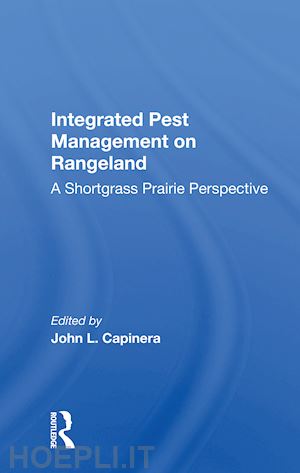Dedication -- Preface -- The Rangeland Resource -- An Overview of the Western Grasslands -- Grazing Management Systems for the Shortgrass Prairie -- Forage Quality: Primary Chemistry of Grasses -- Forage Quality: Secondary Chemistry of Grasses -- Grass Response to Herbivory -- Estimation of Forage Removal by Rangeland Pests -- Rangeland Pests and Their Management -- Ecology and Management of Pricklypear Cactus on the Great Plains -- Ecology and Management of Broom Snakeweed -- Ecology and Management of Mormon Cricket, Anabrus simpled Haldeman -- Behavioral Responses Underlying Ecological Patterns of Resource Use in Rangeland Grasshoppers -- Population Ecology of Rangeland Grasshoppers -- A Historical Look at Rangeland Grasshoppers and the Value of Grasshopper Control Programs -- Integrated Management of Rangeland Grasshoppers -- Future Prospects for Microbial Control of Grasshoppers -- Sampling Rangeland Grasshoppers -- Ecology of the Range Caterpillar, Hemileuca oliviae Cockerell -- Development and Implementation of a Rangeland IPM Program for Range Caterpillar -- Ecology and Management of Harvester Ants in the Shortgrass Plains -- Belowground Arthropods of Semiarid Grasslands -- Nematodes in Rangelands -- Relation of Black-Tailed Prairie Dogs and Control Programs to Vegetation, Livestock, and Wildlife -- Function of Insectivorous Birds in a Shortgrass IPM System -- Biological and Economic Models for Rangeland Pest Management -- Modeling the Pest Component of Rangeland Ecosystems -- Predictive Phenology Modeling in Rangeland Pest Management -- Application of Inventory Control Theory to Economic Thresholds -- Factors Affecting the Economic Threshold for Control of Rangeland Grasshoppers -- Assessment of Alternative Grasshopper Control Strategies with a Population Dynamics Simulation Model -- Future Developments -- Rangeland Pest Management: Problems and Perspectives











